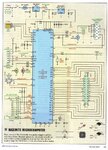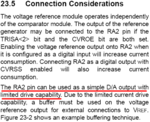min2max
Advanced Member level 4
I want to use a SHT11 sensor to measure relative humidity. As said in the datasheet, although it's ok to use a 5V power, 3.3V is recommended.
I want to know what's the best way to get 3.3V voltage in a 5V circuitry with a PIC18F4550 MCU.
Can I use the DAC module to get a quite precise 3.3V output to drive this sensor?
Thanks in advance.
I want to know what's the best way to get 3.3V voltage in a 5V circuitry with a PIC18F4550 MCU.
Can I use the DAC module to get a quite precise 3.3V output to drive this sensor?
Thanks in advance.


